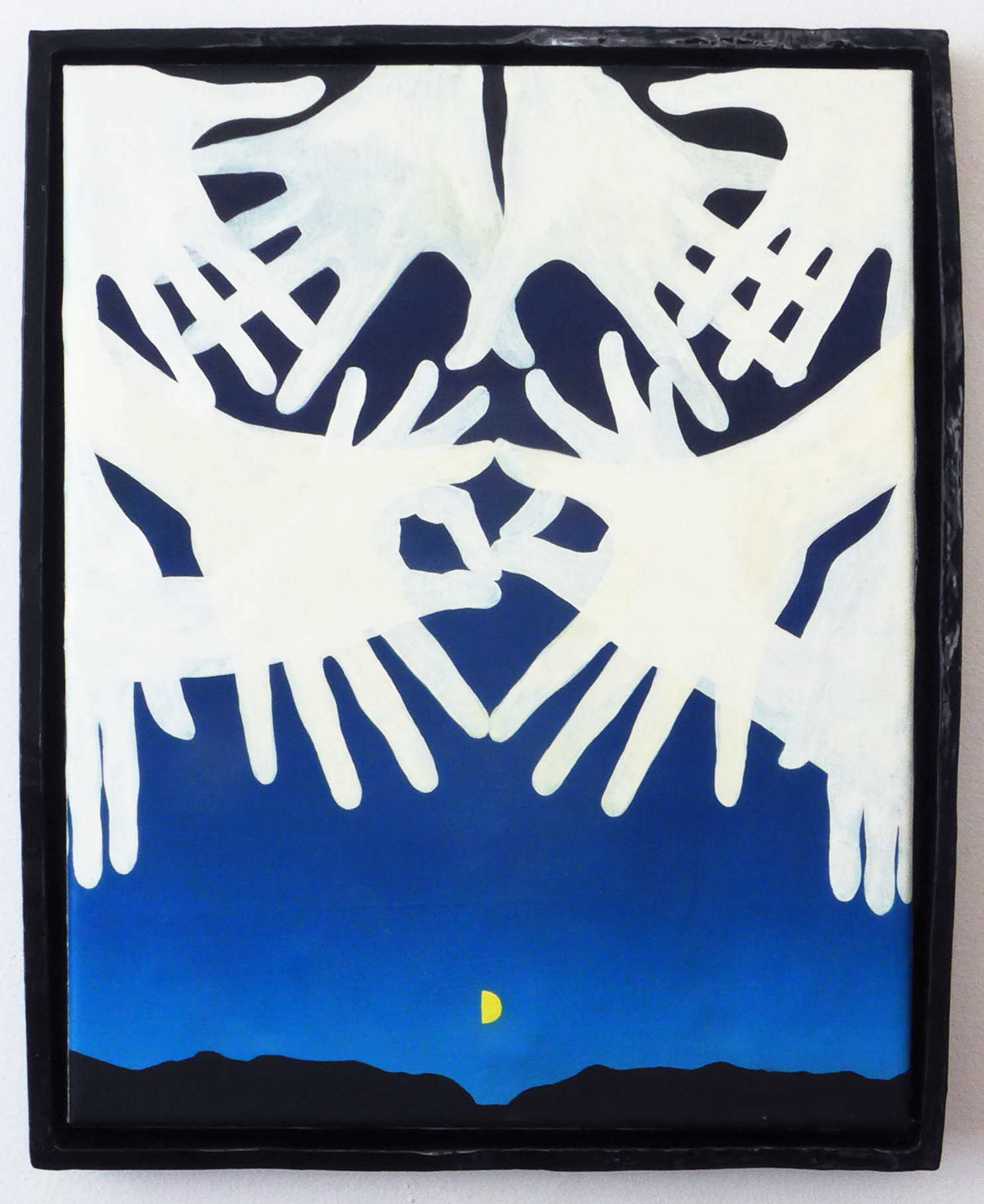Emily Weiner
Emily is a painter living and working in New York. She co-runs Soloway, an artist-run gallery in Williamsburg, Brooklyn, and The Willows, an occasional apartment show series in Brooklyn Heights.
“I’m interested in how symbols move throughout the collective unconscious. In my paintings, I play with icons and geometries which have been reshaped and recorded over different cultures and times.”
Josette asked Emily a few questions
What is your background?
I was born in Brooklyn, raised in New Jersey, and returned to NYC for college at Barnard. I went to graduate school for a MFA in Fine Arts at The School of Visual Arts, which I finished in 2011.
You wear several hats, artist, gallery co-director, show curator, professor, can you tell us about each aspect of your professional life and how they inform each other?
Everything folds back into the art-making: organizing exhibitions both through The Willows (the apartment show I co-organize), and Soloway (a Brooklyn gallery which I run with three other artists) opens up new conversations. Teaching, at Pratt in Brooklyn and SVA in NYC, supports me financially but also pushes me to be thoughtful about the art process, and to hear ideas that I never would have encountered on my own, without my students. I bring all of these outside conversations I have back into the studio with me.
II, 2012
What inspires you?
I'm inspired by the lives and work of artists, thinkers, and other people whose creativity drives them to live a life outside of a societal mold or norm. Georgia O'Keeffe is my art grandmother: She is the first painter that I felt a deep artistic connection to, and she had her first solo show in NYC—at 291 gallery which was showing Braque, Cezanne, and other major art players—before women had a right to vote in America. Stephen Hawking is another one of my heroes. I'm also inspired by materials as simple as oil paint, linen, and ceramic. The most profound inspiration however comes from those symbols, colors, and ideas that are not traceable to any one source: these come from the collective unconscious and on a good day I can conjure them to make some sense in my paintings.
Are there recurring themes in your work?
The recurring themes are those that are also recurring universally in human thought, art, dreams, and communication. My recent paintings have been trying to be a medium for archetypal symbols, by encapsulating their re-appearances in a specific (sometimes dream-like) constellation.
When did you get started?
I've been drawing as long as I can remember, but I started painting in oil freshman year in my art classes at Columbia University.
How has your work evolved since you started?
It's exactly the same search, but the paintings are totally different in look and feel.
Which work of yours is a good introduction?
It's best to start with the present, and then go backwards from here. So the latest paintings from 2016.
“Judgement and criticism are unavoidable, and necessary. The important thing is to be aware of what criticism is good for what I want moving forward, and which is someone else’s agenda and really not useful to me.”
How do you stay motivated?
I just look at other artists.
When and why did you decide to organize shows to promote other artists?
A year after I finished graduate school, I was missing the easy and honest conversations with other artists that I had in our shared studio floor. Formal gallery spaces, with bright lighting, didn’t always allow for anything more than small talk. I had just moved into an apartment in Brooklyn that had lots of space—an old building on Willow street with lots of light, where I could also have my studio. I painted all of the walls white and, along with another painter from school, introduced our first apartment show which we called The Willows.
Tell us something you wish you had known early on.
That the answers reveal themselves in time (though knowing that doesn’t always reduce the anxious questions).
How do you see these projects evolving? Do you have a master plan of where you would like them to be in 5 years maybe?
I’d like to keep doing shows, but as an artist, not a gallerist.
You went to an artists’ retreat over the summer, can you tell us about it and how important these are for creativity and personal growth?
I did a two-week workshop at Oxbow in Michigan, which has a fantastic ceramics studio with big indoor and outdoor kilns. I was able to make ceramic frames for a new body of paintings that I’ll be showing next year at a museum in Iceland. That opened up new material possibilities for my work to expand outside of painting into something more sculptural, but still very related.
Have your priorities changed since you started?
My priorities haven’t changed, though there’s probably more clarity now about a lot of aspects of being an artist and showing work. Though a lot of things are still pretty mysterious which I think keeps it all going too.
You recently learned ceramics, is there something else you’d like to learn?
Surfing.















